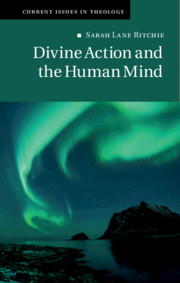Book contents
- Divine Action and the Human Mind
- Current Issues in Theology
- Divine Action and the Human Mind
- Copyright page
- Dedication
- Contents
- Acknowledgements
- Part 1 Divine Action and the Hard Problem of Consciousness
- 1 A Cartography of Crisis
- 2 Contemporary Divine Action Theories and the Causal Joint
- 3 Divine Action and Mind
- 4 The Philosophy and Science of the Mind
- 5 Physicalist Approaches to Consciousness
- Part 2 The Theological Turn
- Bibliography
- Index
3 - Divine Action and Mind
Philip Clayton’s Emergentist Thesis
from Part 1 - Divine Action and the Hard Problem of Consciousness
Published online by Cambridge University Press: 02 August 2019
- Divine Action and the Human Mind
- Current Issues in Theology
- Divine Action and the Human Mind
- Copyright page
- Dedication
- Contents
- Acknowledgements
- Part 1 Divine Action and the Hard Problem of Consciousness
- 1 A Cartography of Crisis
- 2 Contemporary Divine Action Theories and the Causal Joint
- 3 Divine Action and Mind
- 4 The Philosophy and Science of the Mind
- 5 Physicalist Approaches to Consciousness
- Part 2 The Theological Turn
- Bibliography
- Index
Summary
In the previous chapter, I surveyed the current state of contemporary divine action theories and the role that the causal joint has played in their development. It became clear that not only is the standard model of divine action largely committed to noninterventionism and incompatibilism but that it has also exhibited a significant confusion around the laws of nature. In addition to the scientific and metaphysical problems attending the standard causal joint approach, it is evident that the problem of suffering is an immensely difficult theological challenge to any proposal suggesting that God can and does respond to created beings within the temporal natural world. As a representative test case, I outlined the debate surrounding divine action and QM, concluding that standard divine action models often fail to be scientifically plausible or theologically adequate. In fact, the entire contemporary divine action dialogue is framed by terms and metaphysical commitments that may be question begging and insufficient for Christian theism, presupposing a quasi-deistic God–world model that lacks a robust understanding of God’s immanence in, and involvement with, all Creation. This being the case, science and religion has been effectively hamstrung into producing theories that either disallow any meaningful divine action, or confine it to specific areas of the natural world (thus committing the theological faux pas of “God of the gaps” thinking). Nicholas Saunders, I suggested, is not far off in suggesting that theology is in a state of crisis – at least, that is, so far as the standard divine action model is concerned.
- Type
- Chapter
- Information
- Divine Action and the Human Mind , pp. 81 - 132Publisher: Cambridge University PressPrint publication year: 2019

